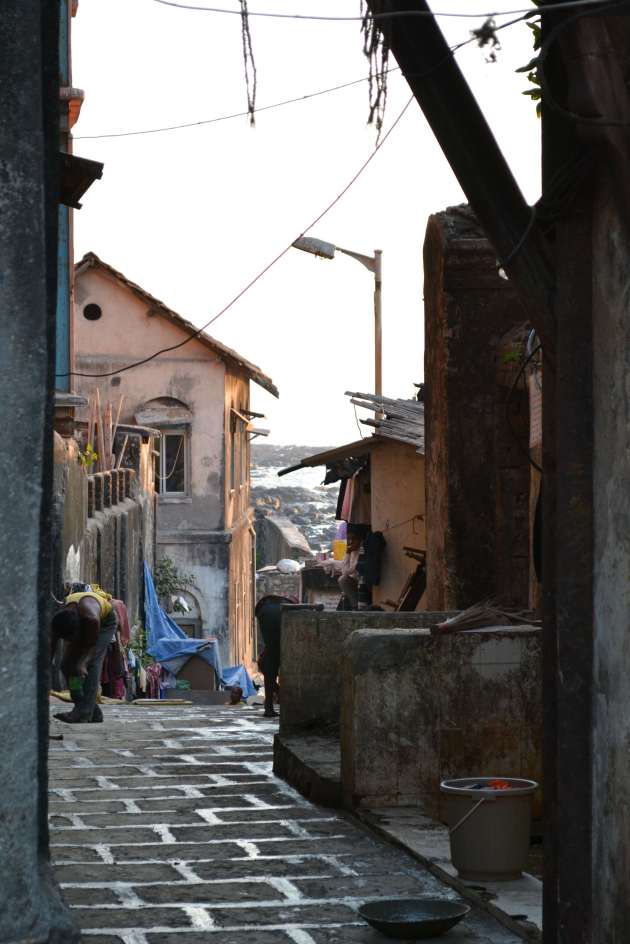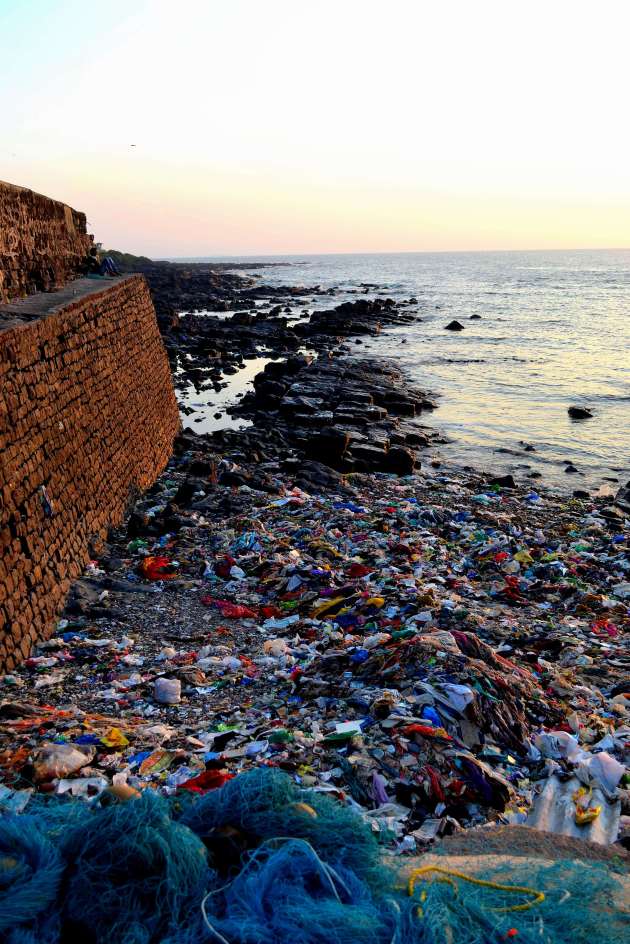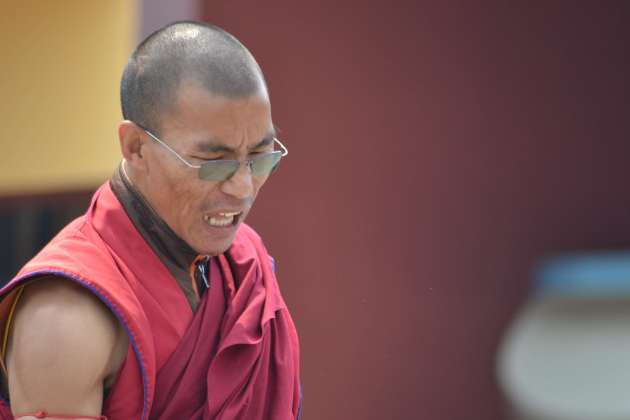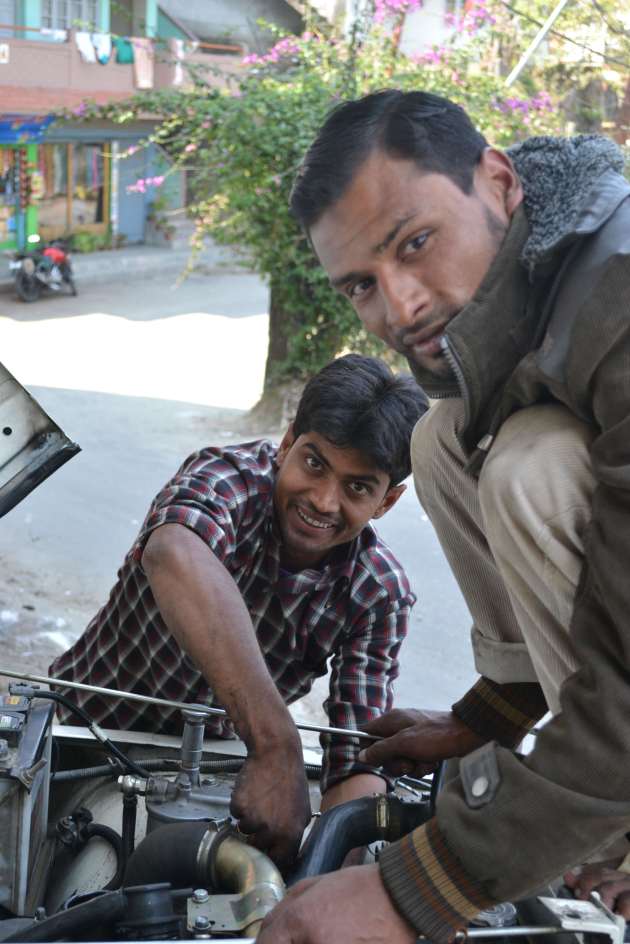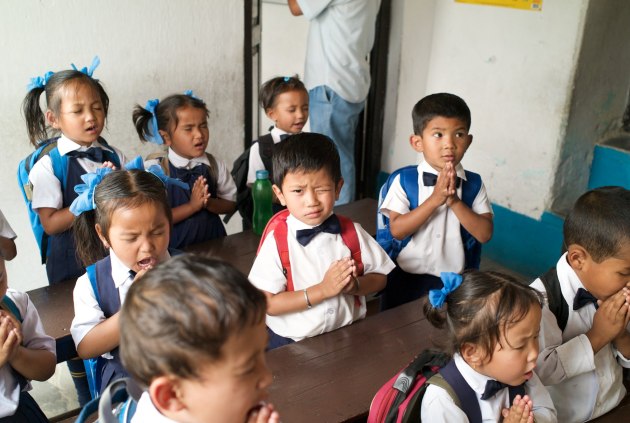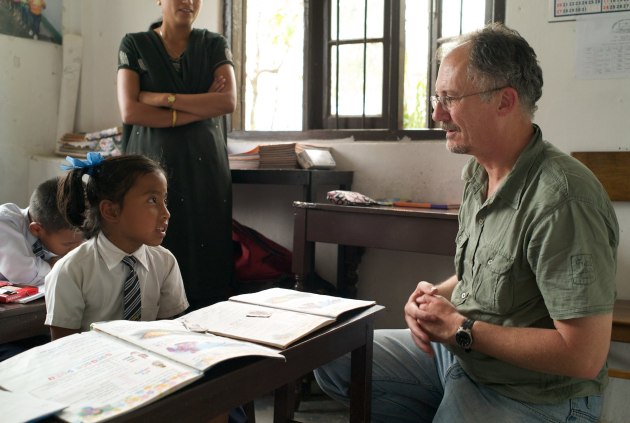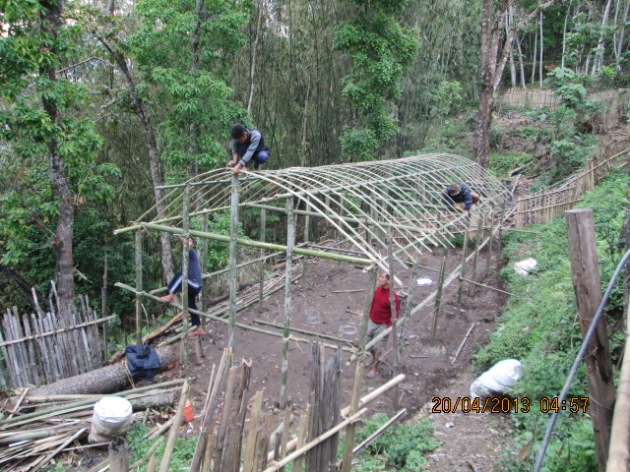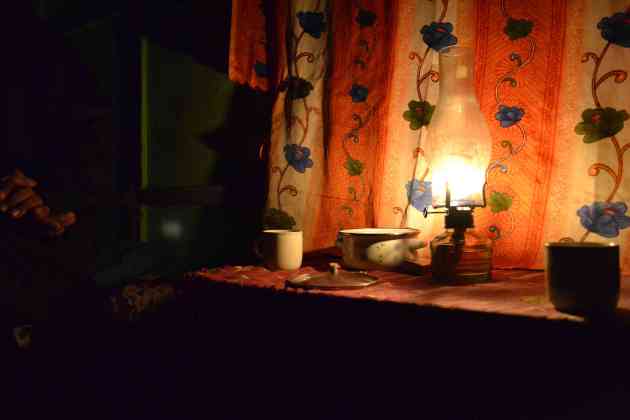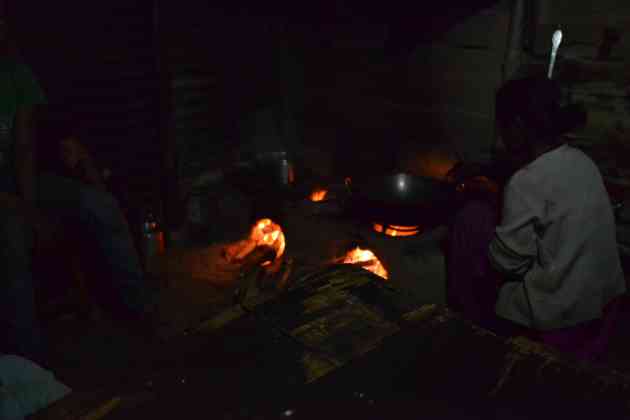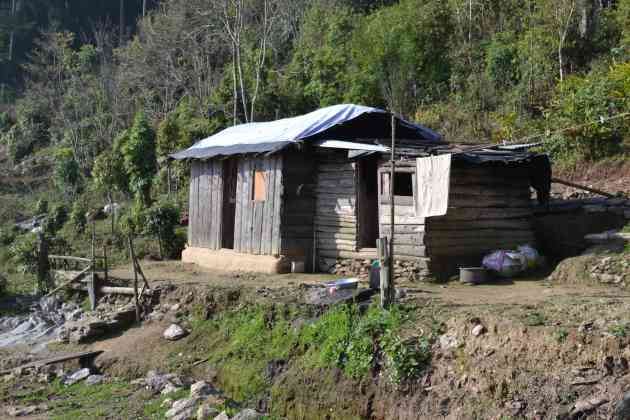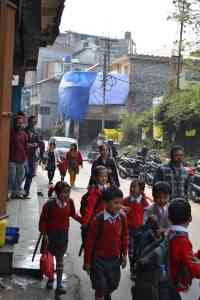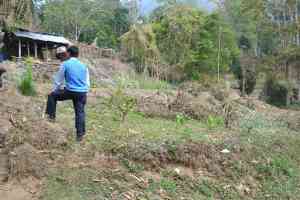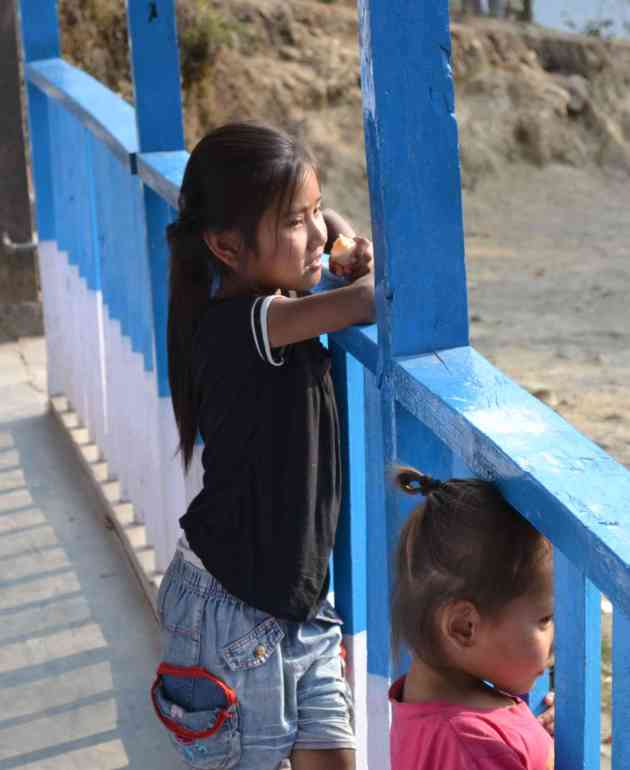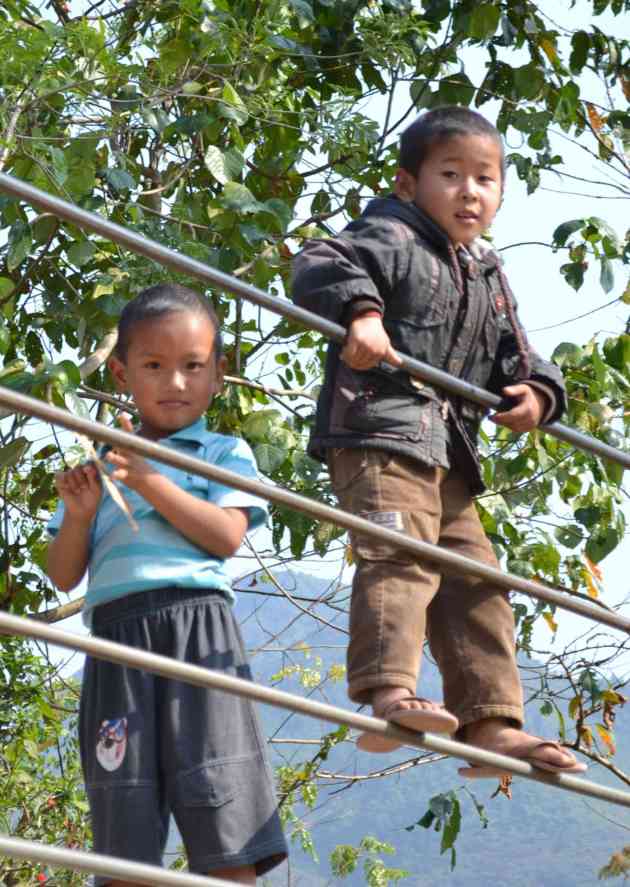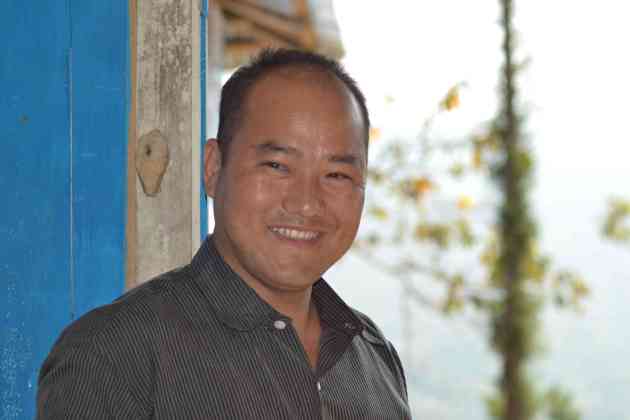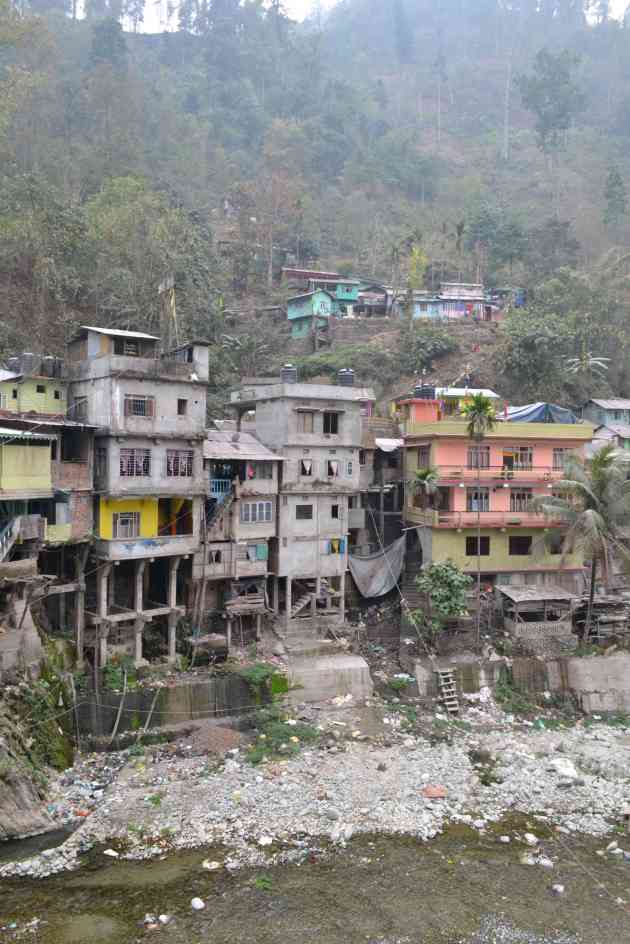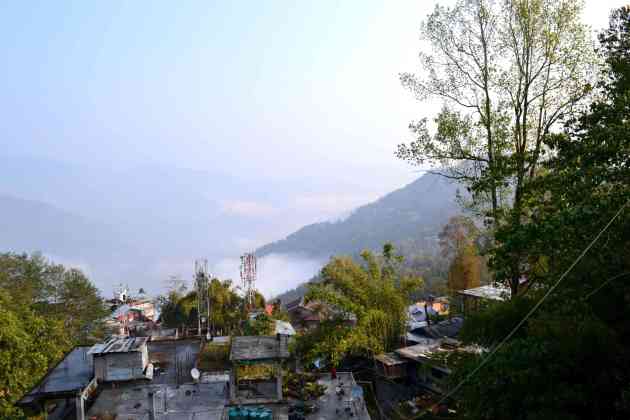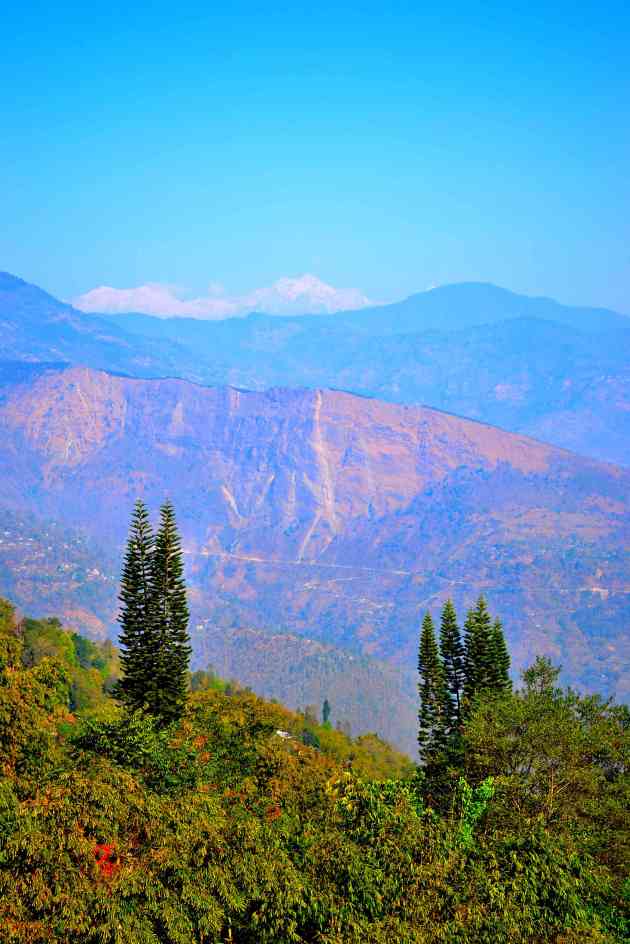My visit to the Nepalese city of Bhaktapur coincided with the country’s New Year celebrations (it is now 2070 in their calendar) and the nine day festival of Bisket Jatra. As a Northern European, used to private and quiet religious celebrations conducted oncwe a week, this was a bit of an eye-opener, on all three fronts.
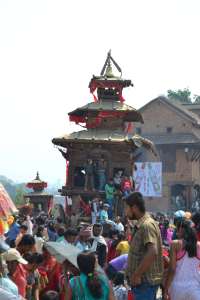
The chariot of Bhairab at rest in the main square.
We arrived in the city on New Years’ Eve (13 April’ this year) which is also day 4 of the Bisket Jatra celebrations. Initially, it seemed like nothing more than the usual might be going on – we strolled around, took a couple of pictures, exchanged pleasantries with the flute peddlers and generally relaxed. But then the crowds started growing and moving and we with them. I have no pictures of that evening, so I shall just have to do my best with words.
Bisket Jatra is a nine-day celebration around a romantic story involving a couple of gods, a king’s cursed princess, several dead suitors and a hero. Intertwined with this story is one another, mystery tale, of the principle God and Goddess of the city being the wrathful aspects of Shiva (the destroyer) and his consort. Okay, so far? During the festival, the Gods are placed in great big wooden chariots that are dragged through the streets by groups of young men, who win the privilege in a giant tug of war that is held at the start of the festival. Moving these things on the cobbled streets is no easy task, either to do or control. Our hotel manager told us that the day before we arrived, two people were crushed to death under the wheels of Bhairab on his way to the upper square. He seemed quite excited about it.

The erect “pole” – the crosspiece is supposed to represent an evil snake that has been speared before it could prevent him rescuing the princess. Um.
That evening, we went to see the fourth day of ceremonies in the lower square. Here, literally hundreds of young men, surrounded by a crowd of thousands, worked to erect a 20m (60′) tree trunk on a plinth in the main square. I am afraid my picture from the morning after gives only a slight impression of the size, but imagine, if you can – around 200 men, dragging on eight ropes that are tied to the cross-piece. Their efforts are timed to the beat of a separate tree trunk being lifted and then dropped on the plinth (it takes three men to do just that) amplified by the shouts of the crowd. “Urah! Urah! Urah!” X frames built from the branches of the same tree (and held together by hand-made rope) are pushed into place to provide support, between bouts of effort. But with no guide ropes the pole frequently swings sideways, threatening the mass of onlookers who run away, screaming and laughing, returning in a few minutes when the panic has passed. True; there are armed police attempting some crowd control but any health and safety officers have quietly crawled away to be sick in a corner.
All I can say is that the excitement generated by this event made it clear that our English Maypoles and Morris Dancers have a thing or two to learn about Spring fertility rites! Especially, given that none of these things seemed to be organised in any systematic way. This is a festival of and by the people – while Hindus have their priestly caste, the Brahmins, their Sadhus and temple attendants, the life of their religion is carried in the blood and the dedication of the people. As demonstrated by these other scenes from the day after.
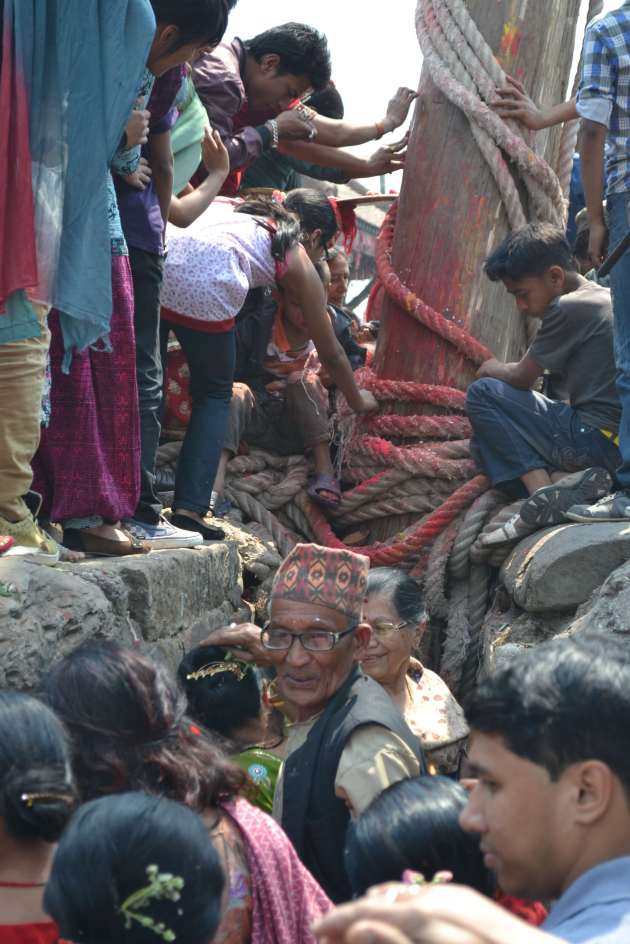
The throng around the base of the pillar, doing puja.

A plate of offerings to the gods.
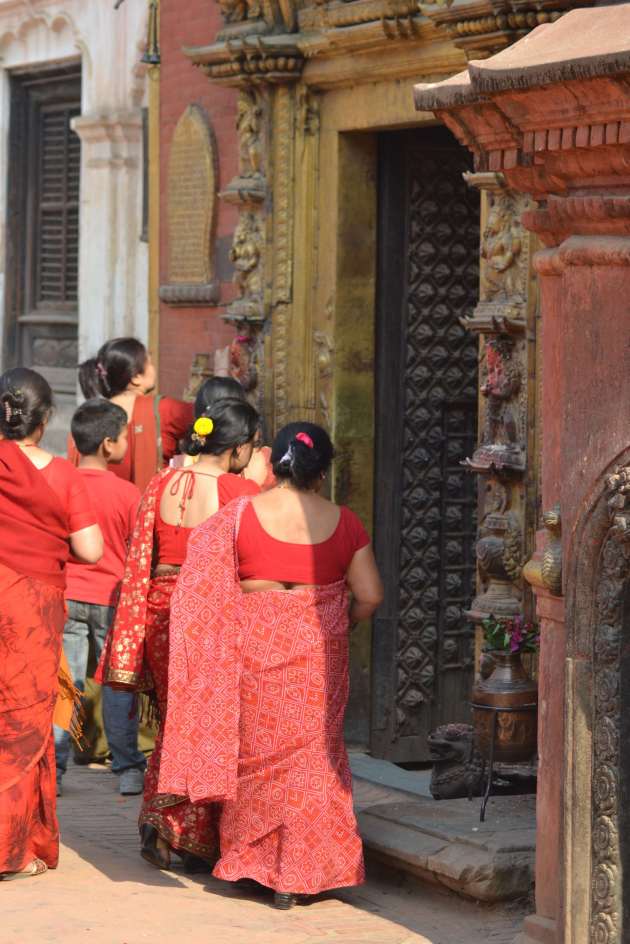
Morning offerings – take on New Years’ Day, but something you might see at any time.

Boys, meantime, do what they do.

A shrine in the middle of the main square.

And if you need a nap, well, take it – and where better, but in the lap of the God.
In closing, this one 24 hours probably taught me more about the true nature of India (and Nepal) than I could ever have expected. What unites these places is not their national boundaries or their politics, or even the religion. There are two main features I keep returning to. There is this irrepressible quality of eagerness and an appetite for living that is quite capable of sweeping all and everything before it; it runs throughout their society – vibrant, wilful, open; unmoderated and therefore dangerous, but exciting and captivating. But there is also this deeper seam of quiet, insistent and persistent dedication which expresses itself in the daily rites of puja that I witnessed everywhere I went – a core of value that seems to speak of something truly ancient and universal in humanity.



